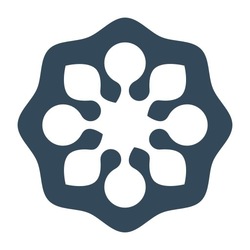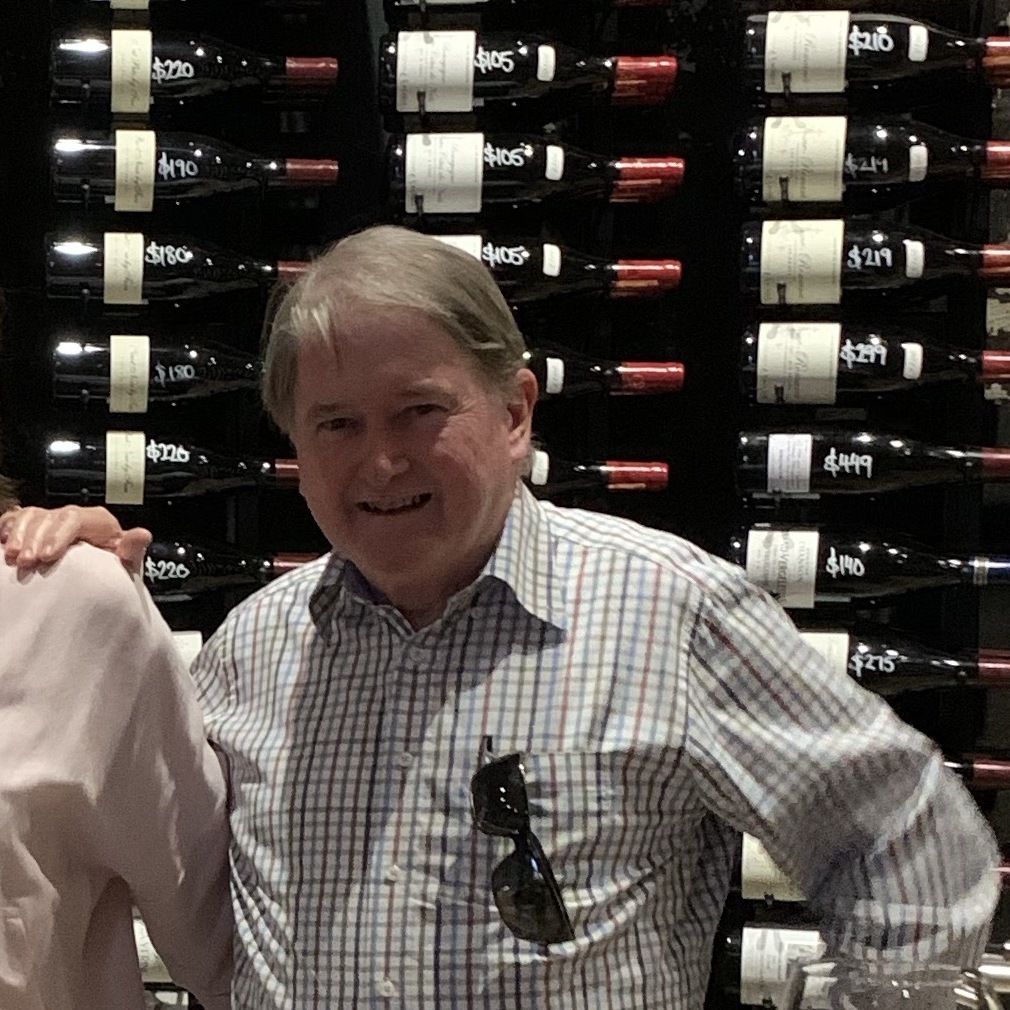Weather
Tesoro Della Regina
Valdadige Pinot Grigio 2016
Great light crisp wine on a hut summer day. Nice to drink sitting outside enjoying the weather. — 7 years ago
Les Vins Contés (Olivier Lemasson)
Pow Blop Wizz Pétillant Rosé Blend
Juicy, fresh red berries, a lovely acid and a generous touch of funk and a mouthwatering finish that leave you wanting more. Good in any weather but if it’s over 80, this is what you want to drink. Definitely a little sweet but not cloying. — 7 years ago
VRAC
Vin de Pays de Méditerranée Rosé Grenache Blend
Bring on the warm weather! Bright acidity dancing on the palate. Super dry finish. Clean ocean breeze nose. Unripened red berry fruit. Ever so slightly tart. — 8 years ago
Domaine Dupeuble
Beaujolais Gamay 2016
Strawberry jam wine. Drank this during a rare heat spell. Light enough for the warm weather, and fruitiness was very refreshing. Once paired with food, the fruitiness was a bit excessive. — 8 years ago
Domaine Montrose
Rosé Vin de Pays de l'Hérault 2016
Mix of Syrah, can sauv, and garnacha, limestone off the nose with hints of lime, abundant strawberry and slight melon. Easy to drink especially during warm weather. Would recommend to pair with almost anything other than a number of steaks. — 9 years ago
La Côte Rêvée
Chemin des Sables Rosé Carignan Grenache
Wow, this is an amazing value wine at only $10! I confess, I didn't know anything about la Côtes Rêvée and assumed it was in Provence, due to the sweet lychee aroma. However, the medium plus acidity definitely makes sense for the Loire Valley. This delicate rosé has aromas of slightly underripe strawberry and raspberry, like they were the first crop of late spring. There is a bit of minerality that isn't quite smoke or gravel, but more like soft chalk. I would think from the aromas that the summer of 2015 (this vintage) was hot and they picked the grapes early. The varietals are Carignan (70%, increasingly popular in CA) and Grenache (30%).
I would pair this with a strawberry, goat cheese, and spinach salad or baked salmon with buerre blanc... mmm.... yes, definitely the salmon! Oooh, or shrimp scampi or pasta á la vodka! Definitely a food-friendly wine!
Word of advice: do not over-chill, otherwise you lose the aromas. 57-62 degrees is perfect for this wine, great for porch sitting when the weather is nicer! — 9 years ago
Château Saint-Pierre
Cuvée Tradition Côtes de Provence Rosé Blend 2015
Pretty damn good dry rosé. Great summer weather wine. Finish leaves you wanting more. — 9 years ago
Kim Crawford
Marlborough Sauvignon Blanc
My favorite go-to Sav Blanc, especially when the weather turns warm in Phoenix. Green apple, pear and citrus notes (lime?) followed by a hint of herbs in the finish. Pairs well with goat cheese. I like this wine with a cheese board. — 7 years ago
Bedrock Wine Co.
Ode to Lulu California Old Vine Rosé Blend
It might shock you, but my favorite rosé is not French but instead comes from California! Blasphemy, I know - but Bedrock's Ode to Lulu is just that good. The difficulty is actually finding a bottle. For the last three years, I've only been allocated a case (or less) to sell here in Denver. It's possible you are one of the select few I've actually told about this wine... If not, now is your chance. This is the first year there's an "okay" supply. It won't last, but you should be able to get a bottle.
So yes, it's not French but it's made in the same style and method of Tempier Bandol Rosé- the most sought after, cult rosé out there. The name "Ode to Lulu" is actually an homage to the 4.5 foot tall, 101 year old woman named "Lulu" Peyraud (born Lucie Tempier) whose father gifted the Mourvedre heavy estate to her and her husband Lucien Peyraud. The wines they would go on to produce from the 1940's onward quite literally defined Bandol and put it on the map as some of the best rosés out there. She's still alive and presumably drinking plenty of wine.
This California-born "Ode to Lulu" is modeled after the great Tempier, but has some unique properties compared to it's French namesake. For one, the vines are EXTREMELY old. Tempier defined itself by focusing on old Mourvèdre and Grenache plantings, but even these French vineyards cannot compare to what Bedrock is working with in California. If you don't know, Bedrock is the winery of Morgon Twain Peterson, son of legendary Ravenswood founder Joel Peterson. Morgon grew up making wine and through his father has cultivated relationships with some of the most important heritage vineyards in California. The "Ode to Lulu" is made from Mourvèdre and Grenache planted as far back as 1888! These are some of the oldest plantings of these grapes around and make for unbelievable wines. Tempier's average vine age is around 40 years old today. Bedrock's is over 3x as old. Insane.
Morgon may be young, but he has a life time of winemaking experience. He started making wine with his father when he was 5 years old and hasn't stopped yet. In addition to absorbing his father's knowledge on heritage vineyards, he is a real student in the world of wine, earning a "Masters of Wine" designation (this industry's highest achievement). I've been drinking his wine for several years and I can say that his wine is made extremely thoughtfully and with expert attention to detail. This is true even with a wine as humble as rosé.
Unlike most California pink wine, Bedrock is not produced by "bleeding off" juice from a red wine. Instead, the grapes are picked early and separately at very low potential alcohols, and whole cluster pressed with low extraction. This preserves the freshness and acidity, creating a wine of clarity. In an old blog post I dug up, Morgon explains this idea:
"I pick at potential alcohols lower on the scale where brightness and lift still exist. This is not to say that fruit does not matter—I use Mourvedre from a block planted over 120 years ago for requisite concentration of complexity of flavor—but like fine champagne, the wonders of rosé lie in its unbearable lightness of being."
I agree with this idea of rosé and I think most people instinctively do as well. It's no coincidence that our best selling bottles come from provence. However, I urge you to pick up at least one bottle of this Ode to Lulu. It's a wine that's close in spirit to the best French rosé but made from vineyards that are American and unrivaled in age.
This is the fourth vintage of Ode to Lulu I've tasted, and I would say that's the most elegant yet. The 2015 was maybe my favorite for it's depth and I picked a few up to age, drinking my last bottle recently... This new vintage is great now, but it will reward with a short cellaring time. Honestly, if you can hide 2 bottles and drink them before fall or into next year, you will be blown away. Bandol rosé is a wine that improves dramatically over the course of 6 months to several years (Tempier Rosé is known to go decades). This bedrock is no different.
I can personally attest to past vintages gaining depth with time. How is this possible? Unlike other rosé which should be drank young, Bandol and Ode to Lulu are made of Mourvedre, a grape that is naturally reductive and resistant to oxidation. Further, the acidity is high and alcohol low. As the acidity starts to fall away, a depth and richness of character will emerge. In fruitier/riper rosé with more alcohol, this richness becomes too sweet and cloying... Not the case here. This keep balanced through time, gaining complexity while remaining refreshing.
You should buy this wine. However, I think there is one more important facet to rosé that I should mention before you do... Rosé is not always about what's in the glass itself. Rosé is really an ethereal thing... It's more so an "essence" of terroir and vintage rather than a sturdy, hard representation like red wine is... Sorry if that doesn't make sense but what I'm trying to say is that sometimes rosé is more about the place and the people you enjoy it with than the exact flavors themselves. Of course, we cannot all visit the picturesque village of Bandol to visit Lulu Peyraud; but I think, with this sunny Colorado weather, we can come close. Perhaps Morgon said it better than I can:
"Proper rosé is refreshing, life-nourishing stuff that revives the soul... I drink as much for pure pleasure as for intellectual stimulation. In the warmer months there is something sacred about a late afternoon meal of cold chicken, fresh garden tomatoes, and rosé. It is one body in the sacred trilogy of rustic simplicity." - Morgon Twain Peterson
#rose #oldvine #lulu #tempier #bedrockwineco — 7 years ago
Weather
Russian River Valley Pinot Noir 2012
Had at The Smokey Rose? Smokey and very good. — 8 years ago
Piero Mancini
Vermentino di Gallura
This a really nice wine! I drink each vintage and it's fairly consistent. I paired this Vermentino with an angel hair pasta, bathed in an infused truffle cream and mushroom sauce. All of a sudden my humble California abode felt like I was in Sardinia, Italia! Wine can do that! Isn't that why we love it? BEST with food, warm weather and friendships. Waxing poetic is easy after a few glasses of this beauty. And it's a value play! — 9 years ago
Cloudy Bay
Marlborough Sauvignon Blanc 2014
Bold grapefruit, effervescent zip. Perfect for 90 degree weather. — 9 years ago
Stormy Weather
Napa Valley Cabernet Sauvignon
Might be my new favorite... The Plucky just received a few cases and was lucky enough to be offered this with dinner. — 9 years ago
Greywacke
Kevin Judd Marlborough Sauvignon Blanc
Grapefruit and Tang. Drinks wonderfully with great weather. — 7 years ago
Ameztoi
Getariako Txakolina Hondarrabi Zuri
Fresh, sour, mineral. Amazing wine for warm weather!
From Gnarly Vines in Brooklyn. — 7 years ago
Continuum
Napa Valley Cabernet Sauvignon Blend 2015
Bottled just a few months ago, the 2015 Continuum is shaping up to be a real gem. The flavors are dark, bold and incisive. In 2015, poor weather during flowering took with it 50% of the production in Continuum's prime Cabernet Sauvignon blocks. As a result, the 2015 has a high percentage (31%) of Cabernet Franc. Today, the Franc is keeping the wine a bit clenched, but that should be less of an issue as time passes. (Antonio Galloni, Vinous, March 2018) — 7 years ago
Château Brane-Cantenac
Grand Cru Classé en 1855 Margaux Red Bordeaux Blend 2005
I have a six-pack of this 05. I thought after 10 years in bottle, it would be interesting to check in on its evolution. While tasty, I’ll wait another 8-10 to open another. Even after 2-3 hours in the decanter, it’s still a very young adolescent. On the nose, slightly sour blackberries & dark cherries, dark currants, baked black plum, haunting blue fruits, anise, whiff of spice, steeped tea, dry stones, dry crushed rocks with dry top soil, caramel, vanilla with fresh & dry red florals. The body is thick & full. Tannins are starting to round out. It’s velvety on the palate. The fruits are; bright, fresh & ripe and really show the greatness of the 05 vintage. Dark currants, blackberries, dark cherries, baked black plum, haunting blue fruits, baked strawberries, cherries, raspberries on the long set, dark spice, clay & loamy dry top soil with crushed rocks, dry stones, cigar with ash, graphite, dry stems, slight herbaceous character, mint, used leather, clove, caramel, vanilla, fresh & dry red florals with violets. The round acidity is about perfect. The structure and length are still strong. The balance is in harmony. As for the long finish, it’s lush, ruby, rich and well polished. Photos of; Chateau Brane Cantenac, large wood vats, Henri Lurton and Estate vines. Producer notes and history...Chateau Brane Cantenac began in the early 17th century. At the time, the estate was known as Domaine Guilhem Hosten. Even that far back, wine was produced from the property. In fact, the wine was so highly regarded it was one of the more expensive wines in Bordeaux. It sold for almost as much money as Brane Mouton. This is interesting because of who went on to buy the vineyard in the 1800’s. The Baron of Brane, also known as “Napoleon of the Vineyards”, purchased the Chateau in 1833. At the time of the sale, the estate was called Chateau Gorce-Guy. To get the funds needed to purchase the Margaux vineyard, the Baron sold what is now called Mouton Rothschild, which was at the time of the sale, known as Chateau Brane-Mouton. Not such a good move with hundreds of years in hindsight! In 1838, the Baron renamed property taking his name and the name of the sector where the vineyards were located and called it Chateau Brane Cantenac. The Chateau later passed to the Roy family, who were well-known in the Margaux appellation in those days, as they owned Chateau d’issan. Moving ahead to 1920, the Societe des Grands Crus de France, a group of merchants and growers that owned several chateaux located in the Medoc including; Chateau Margaux, Chateau Giscours, and Chateau Lagrange in St. Julien, purchased Chateau Brane Cantenac. Five years later, M. Recapet and his son-in-law, François Lurton, took over Brane Cantenac along with Chateau Margaux. Lucien Lurton (the son of François Lurton) inherited Brane Cantenac in 1956. Today, the estate is still in the hands of the Lurton family. Brane Cantenac is owned and run by Henri Lurton. After being given the responsibility of managing Brane Cantenac, it was under the direction of Henri Lurton that large portions of the vineyard were replanted. Vine densities were increased, the drainage systems were improved and the plantings were also, slowly changed. The vineyard of Brane Cantenac is planted to 55% Cabernet Sauvignon, 40% Merlot, 4.5% Cabernet Franc and .5% Carmenere. Carmenere was used for the first time in the 2011 vintage. The only other Chateau I know that still uses Carmenere is Clerc Milon. The 75 hectare Left Bank vineyard of Brane Cantenac is essentially unchanged since it earned Second Growth status in the 1855 Classification. At least that is the case with the 45 hectares used to produce the Grand Vin of Brane Cantenac. Those 45 hectares are planted surrounding the Chateau. Those vines are located just in front of the Cantenac plateau and are the best terroir that Brane Cantenac owns. They have other parcels, which are further inland and much of those grapes are placed into their second wine, Le Baron de Brane. Those additional hectares can be divided into 3 main sections. Behind the Chateau, they have 15 hectares of vines on gravel and sand, 10 hectares across the road with sand, gravel and iron and a 13 hectare parcel with gravel called Notton, which is used for their second wine. The vineyard is planted to a vine density that ranges from 6,666 vines per hectare on the plateau and up to 8,000 vines per hectare for the vines located behind chateau, in their sandier soils. The higher levels of vine density are always found in the newer plantings. The terroir of Brane Cantenac consists of deep gravel, sand and clay soil. Experiments in the vineyards are currently looking at becoming more organic in their vineyard management. Today, more than 25% of Brane Cantenac is farmed using organic farming techniques. It is expected that over time, the amount of hectares farmed with organic methods will be increased. Brane Cantenac has gone through 2 relatively recent modernization’s in 1999, when they added began adding the first of their smaller vats to allow for parcel by parcel vinification and then again in 2015 when they completed a much more complete renovation of their cellars and vat rooms. While Brane Cantenac is a traditional producer, they are no stranger to technology as they were one of the first estates to embrace optical grape sorting machines. In very wet vintages, they can also use reverse osmosis. To produce the wine of Chateau Brane Cantenac, the wine is vinified in a combination of temperature controlled, traditional, 22 oak vats, 18 concrete tanks and 20 stainless steel vats that vary in size from 40 hectoliters all the way up to 200 hectoliters, which allows for parcel by parcel vinification. 40% of the fermentation takes place in the oak vats. The oldest vines are vinified in vats that are selected to allow for separate parcel by parcel vinification. The younger vines are vinified more often together in the same vats. However, the Carmenere is entirely micro-vinified, meaning that those grapes were completely vinified in barrel, using micro-vinification techniques. This can also happen because the amount of grapes produced is so small. Some vats can be co-inoculated, meaning they go through alcoholic fermentation and malolactic fermentation simultaneously. At Chateau Brane Cantenac, malolactic fermentation takes place in a combination of French oak tanks and barrels. The wine of Brane Cantenac is aged in an average of 60% new, French oak barrels for 18 months before bottling. The initial 2 months of aging is done with the wine on its lees, which adds more depth to the wine. There second wine is Le Baron de Brane. Le Baron de Brane is not new. In fact, previously, the second wine went under the name of Chateau Notton, which took its name from one of the main parcels where the grapes were planted. During the late 1950’s and into the 1960’s, having a second wine was important as the estate declassified 3 vintages, due to extremely poor, weather conditions in 1956, 1960 and 1963. Production of Chateau Brane Cantenac is about 11,000 cases per year. — 8 years ago

Lagavulin Distillery
Aged 16 Years Islay Single Malt Scotch Whisky
One of the peatier Single Malts around and being from the West and being a McDonald, one of my favourites. Seaweed and spirity with the expected heat on the throat. A good evening tipple as the colder weather sets in. — 9 years ago











Ming L
Probably my last bottle of Rose this year before the weather turns cold, and it’s a good one. Very aromatic with perfume, strawberry, tangerine, grapefruit, watermelon, sea breeze, and hint of white flower. Soft and smooth on the palate with medium high acidity and a bit saltiness, yet the finish is fresh and crisp. So nice!
40% Grenache, 30% Carignan, 25% Mourvèdre & 5% Cinsault.
— 7 years ago